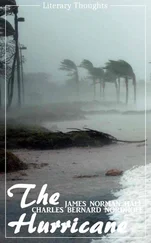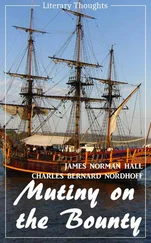11 Ignition! (pages 156—161)
Irving, pp. 30, 59, 77, 137 and 225, sets out the successive launching target dates and pp. 19 and 142—3 the Germans’ operational plans. Dornberger, pp. 224—5, comments on Kammler’s appointment. The V-2 supply system is described by Collier, Defence , pp. 399—400, and shown on his map 30. See also his Short History, pp. 452—3. After the Battle, p. 30, Jones, p. 451, and David Johnson, illustrations on pp. 126—7, explain the launching procedure. ‘Frozen lighting’ appears in Dornberger, p. 165, and his praise of the Meillerwagen on p. 102. The position on 7 September is set out by David Johnson, p. 113, Collier, Battle , pp. 109 and 113, and Irving, p. 284. The launchings against Paris are mentioned by Collier, Defence , p. 405, and Irving, pp. 286-7. After the Battle, p. 30, gives the aiming point.
12 Incident at Staveley Road (pages 162—169)
Gwladys Cox describes the weather on 8 September; Panter-Downes, pp. 340-41, the flying of the Dutch flag; Wanless, p. 426, and Vere Hodgson, p. 423, the atmosphere in London. Chiswick Library provided the details of the borough’s war history and information about Staveley Road. The incident itself is described in the News Chronicle for 7 September 1945; in a report, dated 11 September 1944, in HO 186/2418; and by Irving, p. 286. R. V. Jones’s comment is on p. 459 of his memoirs. Subsequent rumours can be read in R. B. Baker, p. 84, Vere Hodgson, p. 423, and Gwladys Cox, the West Hampstead ‘diary-keeper’ quoted. On Epping, see Collier, Battle , pp. 113 and 170; on the letter to Cherwell, Irving, p. 286.
13 A Plume of Black Smoke (pages 170-184)
The quote from Thompson is on p. 204 and on the application of censorship see After the Battle , p.33, and David Johnson, p. 130. The signal to Montgomery is folio 195 in PREM 3/111. Folio 191 contains the Vice-Chiefs’ decision and the Cabinet’s conclusions, given in full in WM (44) 122 of 11 September. The details of subsequent incidents are taken from Table I in the list of long-range rocket incidents in file HO 191/198, mentioned earlier. On Walthamstow, see Wyld, p. 21. The ‘stocktaking’ report was on 24 September, in HO 191/198. On the first 25 V-2s, see folio 189 (WM 123 of 18 September) in PREM 3/111. Thompson’s meeting with Morrison is on pp. 204—206; the government’s hopes of Arnhem in Irving, p. 287; the anti-rocket measures in Collier, Defence , p. 408; and the Chiefs of Staff’s report of 25 September is WP (44) 534, folio 185 in PREM 3/111. R. B. Baker, pp. 84—6, attended Buck’s club; the early casualty figures are in the list of incidents 1—26 in HO 191/198, cited above. The location of the batteries in The Hague is in After the Battle , pp. 30—31, and the move to Walcheren in Collier, Defence , p. 408. Jones, pp. 441—2, and Irving, p. 285, describe the mission to Blizna, though the former dates its end at 27 September, not 22 September.
14 A Splash in the Marshes (pages 185—194)
Irving, p. 289 (footnote), mentions other V-2 targets; Collier, Defence , pp. 410—11, how the Germans’ plans were disrupted; Dornberger, pp. 225—6, how he responded, p. 224 his agreement with Kammler and pp. 227—8 his supply and development problems. On the launching batteries’ moves, see Collier, Defence, p. 409, and Collier, Battle, p. 110. On the Norfolk campaign, see the Air 20/3439 report, ‘Air Raids on Norfolk’, p. 60; Banger, p. 89, which places the Hoxne rocket at 6.10 p.m.; and document C/ARP/1/33 in the Norfolk Record Office, my principal source throughout the chapter, which lists every incident in the county. For a retrospective account, by Christopher Elliott, see the Eastern Daily Press for 2 January 1969, which mentions ice-laden fragments and vapour trails. The ‘splash in the marshes’ quote is from a private informant. Collier, Defence, pp. 409—10, sums up the military value of the campaign and p. 413 describes Hill’s problems. Collier, Battle , p.172, Defence, p. 412, and Irving, p. 289, describe the end of the Norfolk interlude.
15 The Liar on the Thames (pages 195—206)
On the resumption of the bombardment of London, see David Johnson, p. 146, HO 202/10 and Air 40/1653. Berwick Sayers, p. 111, mentions the secrecy in Croydon. The ‘official summary’ mentioned is in HO 191/198. On Chelsea, see Lees-Milne, p. 127. On the Luton incident, see Luton at War, p. 99—100, and HO 191/198; on subsequent V-2s, Air 40/1653; on the study of the accuracy of long-range rockets to March 1945, SORS/1/92. The New York Times lapse is recorded on folio 182 of PREM 3/111. Thompson, p. 207, describes censorship arrangements and their unpopularity. The Cabinet minutes of 16 October are in WM 137 (44) 3, its meeting of 23 October is in WM 140 and the discussion about a public statement is on folios 155, 154 and 138 of PREM 3/111. The text of the German communique is in WM 148 of 8 November (folio 137 in PREM 3/111) and David Johnson, p. 154, states (without quoting any source) that it was issued at 6.15 p.m., but this is contradicted by the ‘Daily Digest’ report of the BBC Monitoring Service, Part I, IA (II) Home (v). Heinz Rieck’s talk is in report IA (I) Home (ix). David Johnson, p. 156, incorrectly attributes Churchill’s statement to ‘the day after’ the German communique. The ‘liar on the Thames’ extract and the German article are in ‘German Press Reports’ for 10-11 November in HO 199/374. Thompson, pp. 204—207, describes later censorship arrangements, Irving, pp. 291—2, and Jones, p. 452, the number of rockets arriving and the inability to jam the V-2’s guidance system. Blake, p. 86, which puts the number of dead at the Crooked Billet at ‘at least 21’, records events in the Bromley area, and my anthology The Home Front carries an eyewitness account of the Holborn rocket on pp. 203—204.
16 Disaster in Deptford (pages 207—216)
Apart from private informants my main sources on the Woolworths incident were the reports in HO 186/2381, i.e.: E. G. Bax: ‘Notes of a Visit to Deptford’, 25 November, and Incident at New Cross Road. Report by Casualty Services Officer’, 29 November, and the South London Press for 28 November. On Folkestone Gardens, see ‘Notes of a Visit to Deptford… by Admiral Sir Edward Evans on 7th March 1945’ in HO 186/2381 and ‘Report for Mr Travers’ by W. Padmore, the rescue officer referred to, in the same file.
17 Christmas in Islington (pages 217—224)
R. B. Baker, pp. 93 and 100, refers to gloom over the approach of winter. The Daily Express, 19 October, gave details of Woolton’s ‘Christmas box’. The Tribune article is reproduced in Orwell, vol. III, pp. 279—80. The survey of V-2s so far is in Air 40/1653 ‘Enemy Air Activity’. R. B. Baker (the ‘OSS official’), pp. 110-11, David Johnson (who places the explosion at 10 p.m., not 11 and mentions Rainbow Corner and Broadcasting House), pp. 170—71, and Weymouth (the ‘BBC producer’ quoted), p. 365, describe the Duke Street incident, as does Gwladys Cox’s diary for 9 December. Report 234 in HO 20/10 gives the number of casualties, but the Daily Telegraph , 27 April 1945, puts the number of US dead at 7, not 8. The optimistic official spokesman was quoted by the Daily Express, 18 December; David Johnson, p. 157, is the ‘American historian’ quoted. On Mackenzie Road I used mainly ‘Notes of a Visit’, at 0300 hours on 27 December, and ‘Report by G. Walker’, 1 January 1945, in HO 186/2400. I also consulted the North London Press for 29 December. The ‘retired resident of Worthing’ was Harriss, p. 31. On New Year’s Eve, see Air 20/3439 and Report 237 in HO 202/10. Casualty figures appear in IWM doc. no. K H9816. The Polish diarist was Raczynski, p. 260. The Dutchman story is in David Johnson, p. 177.
Читать дальше
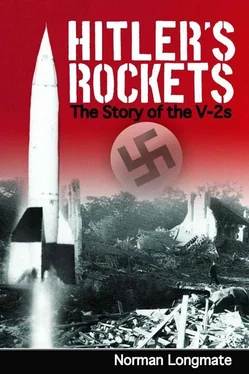
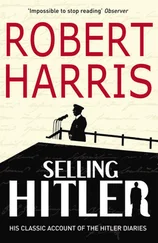
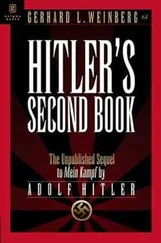
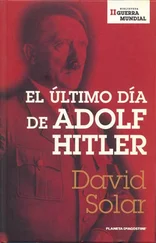


![Traudl Junge - Hitler's Last Secretary - A Firsthand Account of Life with Hitler [aka Until the Final Hour]](/books/416681/traudl-junge-hitler-s-last-secretary-a-firsthand-thumb.webp)
